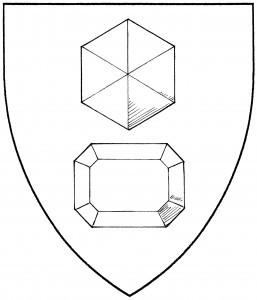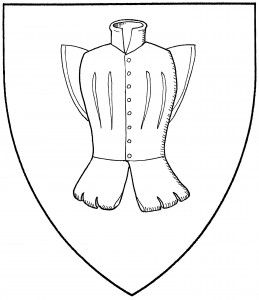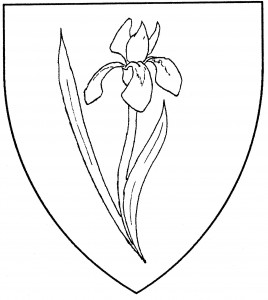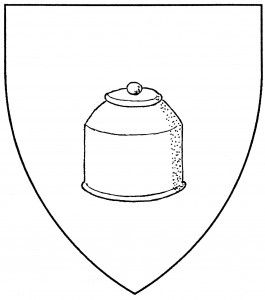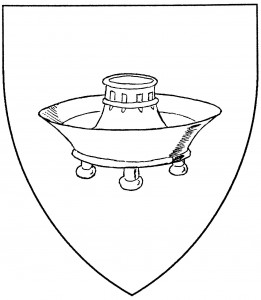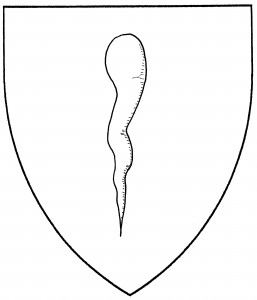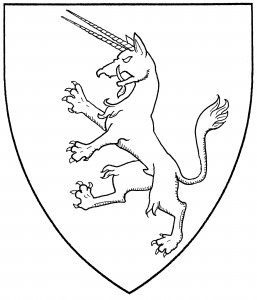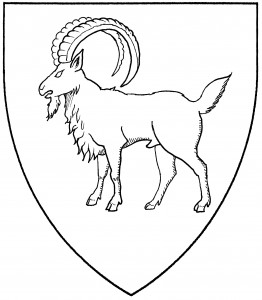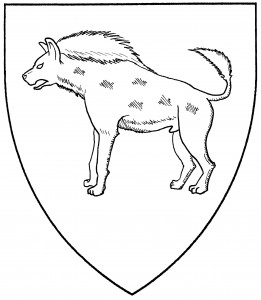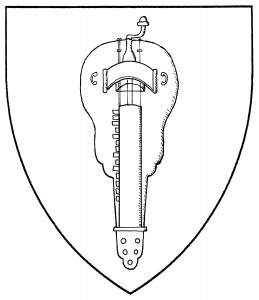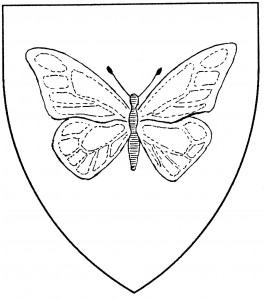
Butterfly (Period)
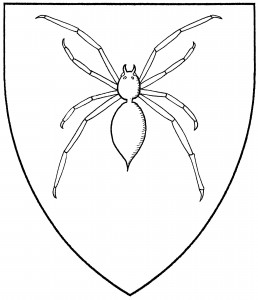
Spider (Period)
The term “insect”, as used here, refers to any “bug-type” creature: true insects, arachnids, and other arthropods. Examples found in period heraldry include the “ant”, also called an “emmet” for canting purposes [Guillim1 151]; the “beetle”, found in the arms of Teufel, 1605 [Siebmacher 42]; the “butterfly”, also called a “papillon”, found in the arms of Burnynghill, c.1410 [TJ 1447]; the “grasshopper”, in the arms of Woodward, c.1500 [DBA2 380]; the “spider” [Guillim1 151]; the “stag beetle”, whose pincers are drawn as actual stag’s attires, in the crest of Hartwell, early 16th C. [Bedingfeld 104]; and the “fly”, sometimes specified as a “gad-fly”, “house-fly”, or “horse-fly”, in the arms of da Varexio, mid-15th C. [Triv 364].
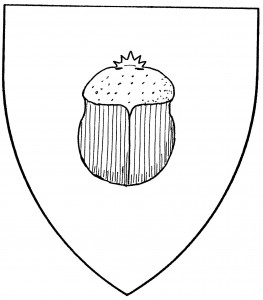
Scarab (Accepted)
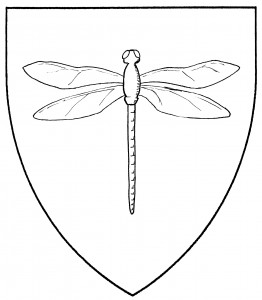
Dragonfly (Accepted)
In Society armory, we have examples of the “cockroach”; the “dragonfly”; the “ladybug”; the “moth”; the “praying mantis”; the “caterpillar”, which is statant by Society default; and the “scarab”, usually stylized as in ancient Egyptian art. Smaller insects, such as the flea, have been deemed unsuitable for Society use.
All winged insects are volant en arrière by default; this posture may also be blazoned simply “volant”, and in the Society is sometimes misblazoned “displayed” as well. Unwinged insects are in general tergiant by default, with heads to chief; the exceptions are the grasshopper, which is statant, and the praying mantis, which must be explicitly blazoned. Their posture is sometimes qualified by such terms as “extended”, “displayed”, &c; such qualifiers are usually superfluous.
Permissible insect postures other than the defaults are limited. As of this writing, insects may not be rampant, but may be statant. Winged insects may not be rising; when winged insects are statant, Society convention has their wings addorsed. Those insects tergiant by default may be tergiant inverted, if their identifiability is not compromised, but this is usually considered a step from period practice.
Generally, insects do not have “proper” tinctures, but Society armory has a few cases. The “butterfly proper” is tinctured as found in nature; the breed of butterfly must then be specified. The “ladybug proper” is gules, spotted sable (with the legs and head usually sable as well).
The illustrations show a butterfly, a spider, a scarab, and a dragonfly; all are in their default postures. For specific entries, see bee, scorpion.
Elizabeth Papillon bears: Per bend purpure and Or, six butterflies counterchanged.
Daria Joan de Courtenay bears: Argent, a praying mantis rising, wings addorsed vert.
Adrianna de la Telaraña bears: Per pale sable and Or, a spider tergiant counterchanged.
Daffyd of Emmett bears: Gyronny of twelve gules and Or, an emmet sable.
Andrew of Seldom Rest bears: Or, a dragonfly displayed gules.
Laurent le Noir bears: Pean, a winged scarab within a bordure Or.
Duncan Prymrois bears: Azure, on a bend sinister cotised Or a stag beetle sable.
Johannes Gotzmann bears: Argent, a grasshopper contourny, a bordure vert.
Crónán Colach bears: Argent, on a four-leaved clover slipped bendwise vert a caterpillar argent, on a chief engrailed vert a sword argent.

